International Marketing Assignment: Scenarios Based On International Trade & Enterprise
Question
Task:
Your task is to prepare an international marketing assignment addressing the below questions using relevant theories.
Answer
Introduction
According to the research on international marketing assignment, international trade is termed as the exchange of goods and services amongst the several countries and continents. Global Trade helps the consumers and the economies to use the product and services that are not manufactured in the domestic countries or domestic production of which will be expensive. Theories like Absolute Cost Advantage depicted that every country has access to natural resources through which the produces gain costs advantage in the manufacturing of the products (Durmaz & Kagochi, 2018, p.2). The countries that are in a position of cost disadvantage can import the products from the economies where it is produced at low costs. It can be said that early economists like Adam Smith and David Ricardo had realized the importance of global trade for the countries. However, globalization has also been detrimental to small nations and developing economies. The report will analyze different concepts of international trade in context with the world.
Question 1: World Trade Overview and Gravity Model
It is estimated that more than 30% of world output is traded national and international borders thereby in the year 2015; the world trade exceeded $21 trillion.
Decades ago, trade volumes were generated from agricultural and mineral products for the UK and the US. In the 19th century, Britain traded with countries like North America, Latin America, Africa, and Asia. In 1910, the imports for Britain from the US were majorly composed of mineral and agricultural products, however, in the same year; the US exported and imported both the products. In the year of 2002, both the countries majorly traded in manufactured products. In earlier times, all countries traded with each other irrespective of size and distance that further impacted the final prices of the goods. However, it was determined that the size and distance of economies were directly associated with the volumes of goods and services.
The Trade of Britain can be explained with the gravity Model. The Gravity Model assumed that size and distance was important as
Tij= A × yi × yj ÷ Dij
Tij= It is the value of trades that country
yi= It represents the GDP of the countries
Dij= It is the distance of the countries (Feng et al, 2019, p.33)
A= It is a constant term
Hence, the trades of Britain are contributed by the GDP of trading economies (Germany and other European countries) divided by the distance. In this view, the exports and imports of Britain (UK) have steadily grown in the past decades. The economy majorly exports machinery, transport, and electronic equipment. The country has been increasingly trading with other developing economies apart from the US due to the size of European countries as they have large GDP value. In this view, the European Unions and the UK are large developed economies hence the UK can produce more, and Countries like Germany can purchase more imports.
The UK is an active partner of the European Economic Community and has experienced major reorientation in its trade flows. The export value is high with Germany while the US is still the largest importer of Britain made goods. The growth and rise in Atlantic Ports have been a dominant factor between the trade amongst the European Council and the UK. These routes of the Mediterranean and the Atlantic Ocean provide a cheap means of transport which helps the UK in enhancing its balance of trade. The Historic culture and history of the UK helped in attracting more than 25 million European Tourists.
Question 2: Resources and Trade: Heckscher- Ohlin Model.
Ricardian model
David Ricardo propounded the theory of “Absolute Advantage in international trade”. David Ricardo assumed only one actor of production that is labor in the production process. The major focus of the model was on the comparative advantage that is the capitalist would engage in the production of products in which they cost benefits and export the same. The economies would import the products which had a cost disadvantage, or it was expensive to produce it domestically (Dai et al, 2016, p. 209). Ricardo developed a Comparative Advantage theory that depicts that labour productivity in different nations is varied due to technological advantages. However, the model can be applied in the short- run as the technology might change in international contexts over time (Figueroa, 2017, p.10).
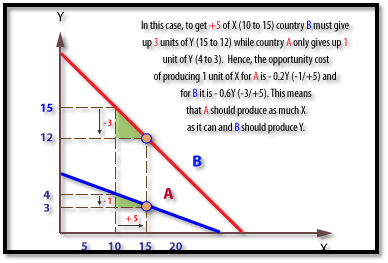
Figure 1:Ricardian Model
(Source: Dai et al, 2016, p. 209)
Heckscher - Ohlin Model
This model was also known as the H-O model which assumed only factors of production that includes labour and capital. The model depicted that the countries have a comparative advantage in the production process in differences in amounts of each factor used (that is labour and capital).
The model recommended that the countries shall manufacture and export goods utilizing the resources that are in abundance. This model is different from that of Ricardo as it focuses on production efficiency. In other words, countries are producing only those products based on the abundance of resources (Kapur, 2015, p.200). Thus, if the countries are an abundant supply of capital, they will eventually specialize in the production of capital intensive and the countries with an abundant supply of labour will focus on labour-intensive production.
The Heckscher- Ohlin Model also assumed that amount of labour and capital ratios are different in economies and also that these factors could easily flow amongst the different sectors of the country. The model was based on the long-run production process as the technology was assumed to be a constant factor. It also suggested that redistribution of income and wealth would occur when the trade and production process was based on resources capability.
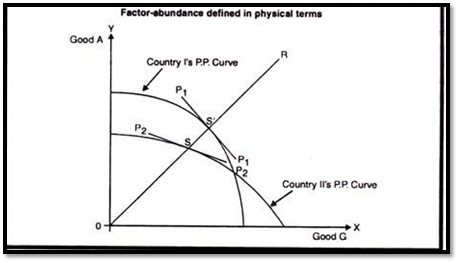
Figure 2:Heckscher - Ohlin Model
(Source: Gokcekus & Bengyak, 2013, p.2)
The above diagram explains that good A can be produced with low costs in Country 1 while Country can cost advantage in producing good B. The steepness of the price line (that is P1 P1 is lower in country 1 than 2. It can be assumed that country 1 is capital intensive and Country 2 is labour intensive hence both the economies will produce products according to the abundance of resources.
Question 3: Economies of Scale, Imperfect Competition and International Trade
The international trade amongst the nations is not majorly dependent on the country differences as the economies can possess identical resources but engage in trade for better advantages. For countries like the US, Japan, and other economies of scale are majorly used for explaining trade relations. In some scenarios, it is often observed that few developed economies import and export the same products (Arnold, 2013, p. 240). For instance, the US is engaged in the imports and exports of machine tools, automobile parts stell, and other products. This is a case of intra-industry trade as several types of products and inputs are integrated into one category.
Ricardian and Hechsher- Ohlin Model assumed constant return to scale that the rates of changes in the factor of production rate yield the same outputs. In other words, if the factors of the product are increased at 1% then the outcome will also improve at a 1% rate. Both models failed to explained industries or firms that might have increasing returns to scale. This is to say that if a firm produces large quantities, the cost per unit falls as output increases. Thus, a small rate of change in factors of production will imply a faster rate of change in the outputs. The industries that are engaged in large scale production often enjoy two types of economies of scale. The external economies of scale are dependent on the reduced cost per unit as per the industry size. On the other hand, internal economies of scale are related to reduce cost per unit depending on the firm size. Also, the monopolistic competition model focuses on consumer demand that is embedded from the sale of goods in a product category. Thus, economies of scale in differentiated products are prevalent when the countries of similar production capacities trade amongst each other (Gross, 2011, chap 1). As the trade increases the variety of products for the customers, it tends to increase customer welfare. This is because the average of the cost of production decreases in the monopolistic competition and the customer experienced a reduced price of products. When trade is conducted amongst the intra- industry, competition rises, and worst-performing firms are wiped from the market. Thereby, the high-performing firms grab high sales opportunities which further improve the overall performance of the industry with technological advancement (Li and Xu, 2016, p.415).
Question 4: International Factor Movements
International factor movements are determined by international labour mobility, borrowing & lending, foreign direct investments, and multinationals (Yabuuchi, 2015, p. 588).
Also, the Marginal Product of Labour (MPL)is referred to as the increase in total production units after adding units of labour while all production factors are assumed to be constant. It can be further simplified by saying that a firm experiences additional output after hiring additional workers (Afonso, 2012. P.181). The MPL is positive during the initial stages of adding the workers as the number of workforces are further increased, the output of the production process slows or declines.
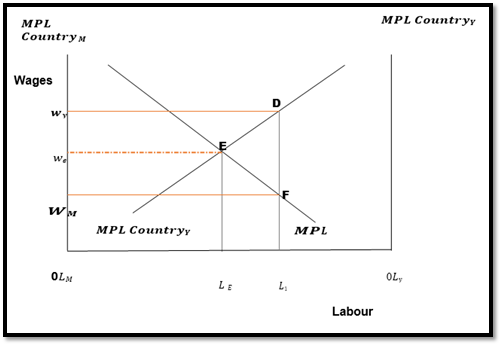
Figure 3:Marginal Productivity of Labour
(Assignment Brief)
Referring to the figure, where a domestic country (Country Y) is characterized by labour abundant and the foreign country (Country M) depicts land abundance. The MPL of workers immigrated to a foreign country will be less as they will earn in another nation considering that factors of production and technology are constant in both the countries. Thus, the workforce of domestic countries will only be motivated to work in foreign countries if purchasing is equal or more. It can be said that the emigration will help in raising the real wages of workers working in the domestic country. As the supply of labour increases in the foreign country (country M), the real wages will decline. The labour migration amongst the domestic and foreign also increases the world output. Hence, the output will rise from OLMLEto OLML1while there will be a decline in domestic output that is OLYL1. Thereby, the world output will only increase when the Country M and Y intersect that is point E.
Heckscher Ohlin model assumed that the trade goods are alternatives to factor mobility. However, this assumption does not hold when equalizations of factor prices take place in labour mobility. This model assumed economies in the international trade product similar goods, however, the countries producing heterogeneity cannot compare the MPL of labour. In addition to this, the technology of the training economies was assumed to be the same but the economies may not be equipped with the same technological expansion which might impact the productivity of labour and the wages provided to them. The H-O model ignores the barriers related to immigration and transportation that further impacts the equalization of purchasing powers.
In this view, immigration impacts on the labour market are dependent on various factors capabilities of migrant workers, competencies of the existing workers, and host economy characteristics. Migration impacts the supply of labour as the worker pool is injected in some sectors of the country. Thus, immigration might result in increased demand for labour due to the expansion of the purchasing powers of the migrant workforce. The short- term impacts of migration amongst Country M and Y on skills of migrant workers that might act competition for the existing workforce. In other words, if the migrant's workforce is alternatives for existing employees then demand immigration will result in increasing job competitiveness amongst Country M and Y while also reducing wages in the short- run. On the other hand, if the migrant workers are complementary to the existing workforce then all employees might experience high productivity which will further inflate the wages for the current employee base. It can be said that the workers employed in the informal sector or low skill occupations will experience more competition than the migrant one as the skills in that particular sector can be easily acquired.
Question 5: Trade Policy in Newly Industrialized/Developing Countries
Trades are beneficial for some developed economies but distort the growth of infant industries in the developing economies. In a large country scenario, the tariffs are imposed for lowering the costs of imports while they also contribute to the national welfare. In this view, the export subsidies or taxes lowers the trade terms for the large country while it also raises the export prices in the world market.
The free trade in developing nations might result in domestic market failure due to suboptimal policy. The domestic market failures include several factors that underemployment, underutilization of resources & equipment, lack in-laws for property rights & patents, technological benefit, environmental costs, and others (Maha et al, 2012. P. 300). The marginal social benefits are often calculated for representing additional benefits to the societies from the private production units.
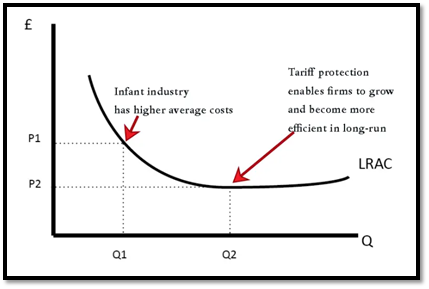
Figure 4: Tariffs Argument for infant industry
(Source: Li et al, 2016, p.420)
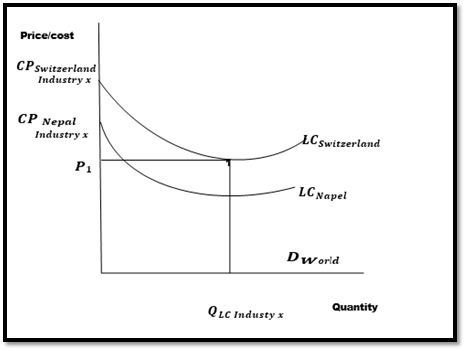
Figure 5:Infant Industry protection
(Assignment Brief)
Referring to the diagram (Figure 5), infant industries' arguments hold for developing nations. The price for Industry X was P1 with QLC quantities produced by Switzerland, however, the government of Nepal adopted tariffs rates for boosting domestic production after which the price of the commodity fell below P¬1. The temporary tariffs protection policy by the Nepal Government has enabled the domestic firms for expanding at lower average costs after which tax protection will no be required. In the past several developed nations like the US had imposed tariffs. To foster stages of economic development, it becomes important for the government to intervene and impose tariffs in the short run. Referring to the diagram (Figure 5) both the countries (Nepal and Switzerland) choose free trade with a binding agreement. The agreements will prevent trade wars and eliminate the requirement of tariff protection from one another. The countries can also indulge in multilateral negotiations for enacting trade restrictions. In real-time scenarios, it is observed that developing countries were successful in achieving extra-ordinary by exporting manufacturing goods. Tariffs protection cannot be adopted as a long-term- policy as the firms might fail to compete with foreign countries and this will reduce economic development.
Question 6: Controversies in Trade Policy
In the year 1999, that was chosen for the World Trade Organization Ministerial Conference for drafting policy requirements regarding free trade. The organization is deemed at deregulating international Trade in areas like agriculture, services, intellectual rights, and others. WTO was supported by corporate houses and several leaders by severally criticized by the local and international labor unions, social and environmental activists for advocating for corporate interests rather than focusing on societal benefit. The opponents like farmers, indigenous leaders’ ion emerging economies found that issues and solutions laid by WTO could hamper the livelihoods for middle- and small-income groups in developing regions. IMF and World Bank were also criticized by the activists for laying policies that would as policy and projects would reduce social services and the funded projects would displace communities while also undermining local agriculture. Negotiations increased as countries like the US had agreed on trade agreements with Mexico and Canada.
The anti-globalization goal was to protect a social interest that included WTO, IMF, and World Bank Policies. The protest destroyed millions of properties in the regions. The activist trade policies condemn that investments in high technology industries create externalities in the economy; however, it was which activities build externalities. The second arguments for trade policies also condemn that government should give strategic advantage in industries with high profits, however, it was unclear these arguments would succeed and be worthwhile. Referring to the infant industry argument and free trade, the protest was legitimate for the short run only as in real-time scenarios developing countries have emerged with high economic growth and some trade restrictions (Maha et al, 2012. P. 300). It was argued that the free trade would hamper the domestic industries of the emerging countries and would directly impact the small and middle- income earners. However, it was argued that free trade would worsen the working conditions and wages in developing nations than the developed economies. It was observed that low wages were a result of low productivity, but workers still receive high wages without trade. It is proposed that trade negotiations should cater to the labor, cultural and environmental standards but the same are quite often opposed by the governments of underdeveloped and developing countries. Free trade with binding agreements could improve the technology and income of both the developed and developing nations.
Conclusion
It can be said that several factors besides size and distance are impactful: for increasing trade flows amongst Britain and Europe. Ricardian Theory explained Trade differences with labour productivity however Heckscher- Ohlin Model demonstrates that the resources of the country create production differences due to which trade is operative. International trade is contributed by several factors of which economies of scale are an important one. In a scenario when the production process of the country is determined by specialization then trade helps in improving world efficiencies and welfare benefits. Also, International factor movements are determined by international labour mobility, borrowing & lending, foreign direct investments, and multinationals. It can be said that low and middle–income economies benefit from free trades than import substitution.
Reference List
Afonso, O. 2012. Scale-independent North-South trade effects on technological-knowledge bias and wage inequality. Review of World Economics,148 (1), pp. 181-207.
Arnold, L.G., 2013. Existence of equilibrium in the Helpman–Krugman model of international trade with imperfect competition. Economic Theory, 52(1), pp.237-270.
Dai, F., Wu, S., Liang, L., and Qin, Z., 2016. Bilateral Trade under Environmental Pressure: Balanced Growth. Journal of Industry, Competition, and Trade, 16(2), pp.209-231.
Durmaz, N., and Kagochi, J., 2018. Democracy and inter-regional trade enhancement in Sub-Saharan Africa: Gravity model. Economies, 6(3), p.45.
Feng, X., Zobel, J.M., Wu, G., and Hodges, D.G., 2019. Do China's Plywood Exports Depend on Trade Partners? Evidence from the Gravity Model. Forest Products Journal, 69(1), pp.26-33.
Figueroa, A., 2017. International Trade and Real Wages. Economía, 40(80), pp.9-28.
Gokcekus, O., and Bengyak, K., 2013. Learning Heckscher-Ohlin Model in Five Easy Steps. Available at SSRN 2209874.
Gross, T.O., 2011. On International Capital Taxation, Tax Competition, and International Trade. University of California, Santa Barbara.
Kapur, B.K., 2015. A symmetric Heckscher–Ohlin model of endogenous growth. International marketing assignment Journal of Economics, 116(3), pp.183-209.
Li, X. and Xu, Y. 2016. Unemployment, Wage Inequality, and International Factor Movement in the Presence of Agricultural Dualism. Review of Development Economics, 20 (2), pp. 415-425.
Maha, L., Ignat, I. and Postolachi, A.T., 2012. Theoretical Controversies on Strategic Trade Policy. Economy Transdisciplinarity Cognition, 15 (1), pp. 300-307
Yabuuchi, S. 2015. Globalization, International Factor Mobility, and Wage Inequality. Journal of Economic Integration, 30 (3), pp. 577-590.












